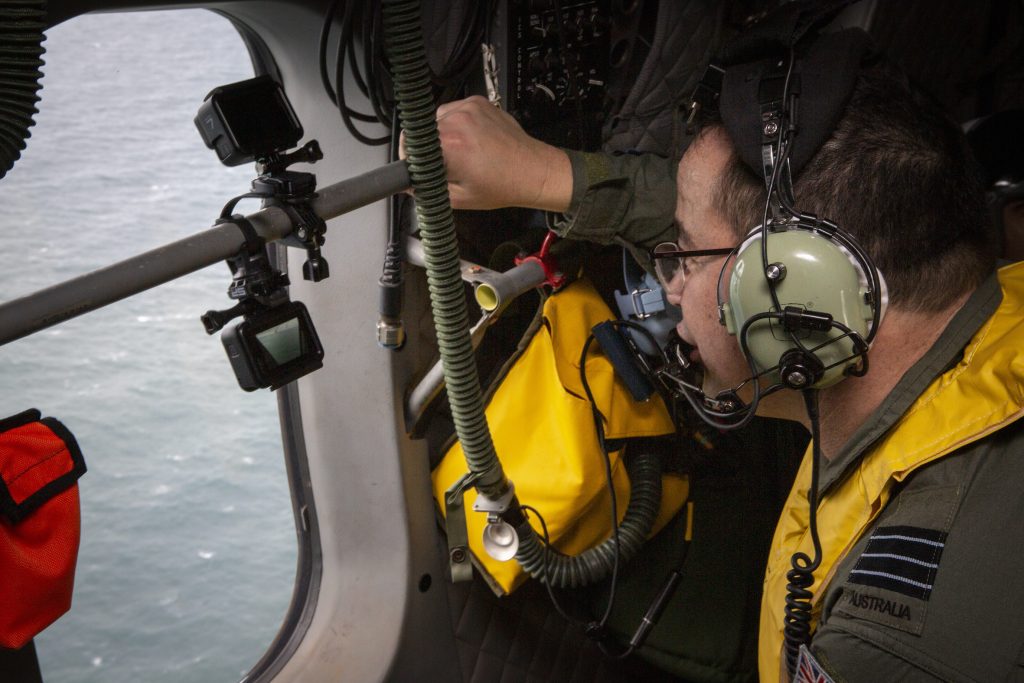RAAF uses AI to enhance SAR

The RAAF has conducted the second airborne trial of a new Search and Rescue (SAR) enhancement dubbed Ai-Search. This uses Artificial Intelligence (AI) to help detect small and difficult to spot targets such as life rafts and even individual survivors. The AI consists of multiple concurrent algorithms, including machine learning, and is used to analyse the imagery collected by a digital camera and augment the human observer.
Although the Ai-Search project is being driven by the RAAF’s Plan Jericho team, the machine-learning algorithm was developed in just two weeks by LT Harry Hubbert of the RAN’s Warfare Innovation Navy (WIN) Branch. Ai-Search was first trialled successfully aboard a RAAF C-27J Spartan last year. The second trial took place more recently over Tasmania’s Tamar River. These ‘proof of concept’ flights saw Ai-Search detect a range of small targets in a wide sea area while ‘training’ the algorithm.
The trials have used only RGB vision generated by the digital cameras mounted on the aircraft, but the algorithm lends itself to any visual sensor, EX2 understands; future trials will explore the use of IR as well as RF sensors. The trials also showed the technology can be applied very easily to other ADF airborne platforms as well as to UAVs and provide a low-cost enhancement and extension of the ADF’s SAR capabilities.
“There is a lot of discussion about Ai in Defence – but the sheer processing power of machine-learning applied to SAR has the potential to save lives and transform SAR,” LEUT Hubbert said.
The project is a collaboration between Plan Jericho, Navy’s WIN Branch, RAAF Air Mobility Group’s 35 Sqn and the University of Tasmania’s Australian Maritime College (AMC). Its genesis was a challenge from the Director General Air Combat Capability, AIRCDRE Darren Goldie, to find a way of enhancing SAR, which is one of AMG’s responsibilities, using improved sensors.
Plan Jericho’s AI lead, Wing Commander Michael Gan, said his team saw the potential for AI to augment and enhance SAR.
“The idea was to train a machine-learning algorithm and AiIsensors to complement existing visual search techniques. Our vision was to give any aircraft and other Defence platforms, including unmanned aerial systems, a low-cost, improvised SAR capability,” Wing Commander Gan said.
His team approached LT Hubbert who had been prominent in developing AI-enabled autonomous maritime vehicles for the Five Eyes’ EX Autonomous Warrior in Jervis Bay in late-2018. He was given a month to develop the new algorithms and completed the work in just a fortnight.
